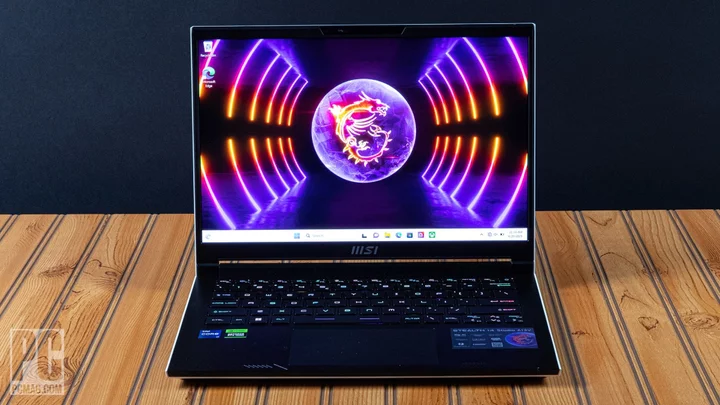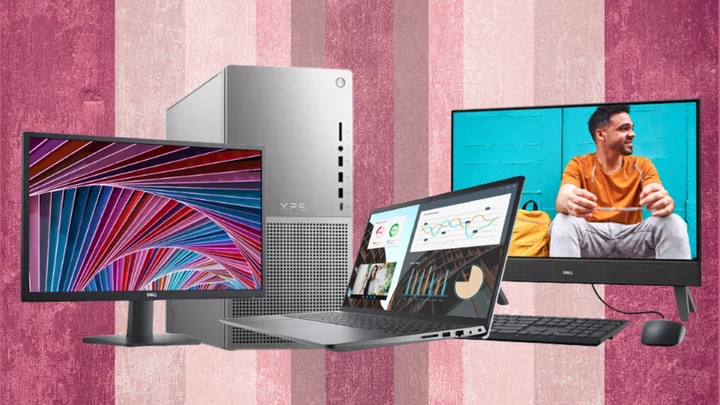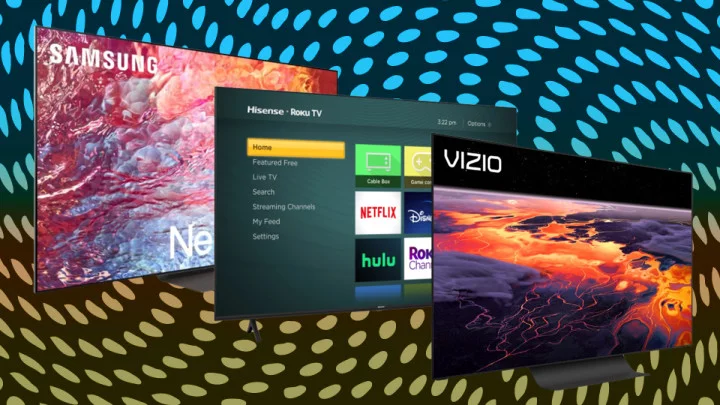Designed for the many modern content creators who often travel while working, MSI's Stealth 14 Studio (starts at $1,699.99; $1,899.99 as tested) packs enough power to enable your best work. Our test model featured an Nvidia GeForce RTX 4060 laptop graphics chip, an Intel Core i7-13700H processor, and a 2,560-by-1,600 IPS display. A hardware loadout like this comes down on the pricier side, but, if you jump between desks and tray tables as often as you change your clothes, shortlist it for a compact media-wrangling laptop. A few too many drawbacks, though, keep it from our Editors' Choice award for high-end content creation laptops.
Suited Up for a Studio Audience
MSI's “Stealth” moniker might be a bit misleading, given Razer's parallel Blade Stealth laptop marketing, but this is most definitely an MSI machine. We received the higher-end $1,899.99 model in an white-on-black frame, but MSI sells a slightly less powerful $1,699.99 model in a color it calls Star Blue.
Both models have the MSI dragon shield emblazoned on their top covers.
The higher-end model has that Intel Core i7-13700H CPU and an Nvidia GeForce RTX 4060 laptop GPU, supplemented by a 1TB NVMe solid-state drive. All models include 16GB of DDR5 RAM (via two 8GB sticks) and feature Wi-Fi 6E for high-speed connectivity. It’s impressive to see an H-series CPU and an RTX 4060 crammed into such a thin-and-light housing.
Where a larger gaming laptop might have ports on the back, the Stealth 14 Studio has the word “STEALTH” cut out in its rear-edge grille. This cutout features RGB effects in sync with the effects on the keyboard. On the left side of the laptop, you’ll find the barrel plug for the included 240-watt charger, an HDMI 2.1 port, and a USB 3.2 Gen 2 Type-C (20Gbps) port with power passthrough.
On the right side, we have a 3.5mm headphone jack (still hanging on here, though positioned far forward), a USB 3.2 Gen 2 Type-A (10Gbps) port, and a Thunderbolt 4 port. It’s a varied amount of connections, including the increasingly elusive HDMI, but those of you with many legacy peripherals might find the single USB Type-A port a shame. Content creators might find the lack of an SD card reader disappointing, as well.
Fortunately, the Stealth 14 Studio is relatively lightweight, which makes carrying a separate USB hub an easy fix for the lack of ports and card readers.
The laptop weighs in at about 3.75 pounds, and it fits effortlessly into most bags. Compared with the larger-screen MSI Katana 15 gaming laptop, which comes in at more than 5 pounds, the Stealth 14 Studio is almost a lightweight laptop. Looked at next to similarly sized laptops in its 14-inch class, though, the Studio's weight is less impressive and starts to fall in line.
Using the MSI Stealth 14 Studio
With the laptop in use, the keyboard lights up in the full RGB spectrum by default, but you can adjust it through the preloaded MSI Center app. The keyboard is your standard chiclet style, although the arrow keys have been minimized to fit the profile of the rest of the keys. They make scrolling pages and navigating spreadsheet cells a bit of a labor, though that’s offset a bit by the large touchpad.
The touchpad makes browsing and working in different applications a breeze as you pinch to zoom in and out on the large surface. While the arrow keys are a bit cramped, the rest of the keyboard is free of this problem, and a quick MonkeyType test confirmed this.
MSI's Stealth 14 Studio display isn't quite the 4K panel you'll find a high-end workstation laptop like the HP ZBook Studio G9, but it's sharp enough for spot work while on the go or for still media work. The screen also refreshes at 240Hz, which is faster even than most gaming laptops.
Above the 16:10 screen is the laptop’s webcam, with a physical privacy shutter for added security. The webcam is a fairly standard 720p resolution that records at 30 frames per second. This can handle the occasional Zoom meeting, but we've seen higher-resolution webcams on similarly priced laptops. With videoconferencing becoming the workplace norm, the lack of a better camera at close to two grand is disappointing, though MSI is far from the only laptop maker still neglecting the camera on some pricey models.
Concert-Level Fan Noise
In my testing, I cranked on Performance mode, which sets the MSI laptop’s fans to their fastest setting to maximize cooling and therefore speed. What this does is fully unlock the performance of the processor and GPU by upping the cooling of both. You gain better results and speeds at the cost of fan noise...a lot of fan noise. It's loud enough that it even gets picked up by the laptop’s onboard microphone.
That’s the drawback of such a low-profile laptop, measuring just 0.75 inch think. While the numbers I received in our performance tests were impressive, the laptop is more than capable of running basic programs at much lower fan speeds, only kicking up to Performance mode automatically if needed. Turning it on is as simple as holding down the function key and pressing the up arrow key—otherwise, it can also be enabled through MSI Center.
Testing the MSI Stealth Studio 14: Competitive Creative Power
To put the Stealth 14 Studio through its paces, we needed to find laptops with similar use cases: gaming laptops that are super-portable, with an emphasis on content creation or gaming on the go.
We had to include our current Editors’ Choice for ultraportable gaming laptops, the Razer Blade 14 (2023), a laptop in a similar price range with an AMD CPU/Nvidia GPU combo, with similar numbers and tailored to the same market. Next up is the 2022 version of the Asus ROG Zephyrus G14, a gaming-focused laptop equipped with the less common combo of an AMD Ryzen mobile CPU and a Radeon RX GPU.
We also threw in the bigger-screen MSI Katana 15, another gaming-focused laptop with a higher-end GPU but lower-end CPU; that config costs about $300 less than the Stealth 14 Studio. Last, we featured the Samsung Galaxy Book3 Ultra, a high-end desktop replacement laptop outfitted with the same CPU and an RTX 4050 GPU. Before running these tests, I activated the laptop's Performance mode.
Productivity Tests
Our primary productivity benchmark, UL's PCMark 10, executes a series of office tasks such as word processing, spreadsheeting, and videoconferencing to test a system's aptitude for mainstream applications. We consider a score of more than 4,000 points an indicator of excellent everyday performance. The benchmark also contains a storage test to rate the response time and throughput of a PC's boot drive.
Three more tests focus on the CPU, wringing out all available cores and threads. Maxon's Cinebench R23 uses that company's Cinema 4D engine to render a 3D scene, while Geekbench by Primate Labs simulates real-world tasks such as PDF rendering, speech recognition, and machine learning. We use the open-source program HandBrake 1.4 to convert a video clip from 4K to 1080p resolution and record how long it takes.
Finally, we run PugetBench by Puget Systems, an automated extension for Adobe Photoshop that runs a series of operations and filters in the popular image editor to test a PC's content creation aptitude. Unfortunately, the extension crashed repeatedly during our tests, and we weren’t able to record an accurate number, but we have other successful content-creation tests further below.
The Stealth 14 Studio took home first place in all of our productivity focused benchmarks. Of particular note was the PCMark 10 productivity suite, in which the Stealth 14 Studio narrowly edged out the latest Razer Blade 14. This score doubles that of the 4,000 baseline we expect from all effective laptops in 2023, ensuring that the Stealth 14 Studio will ace most everyday computing tasks thrown at it.
Graphics and Gaming Tests
We use a pair of programs to test simulated gaming performance, 3DMark and GFXBench. 3DMark has two DirectX 12 benchmarks, Night Raid and the more demanding Time Spy. Meanwhile, GFXBench has its Car Chase and Aztec Ruins subtests, which test OpenGL performance and run the tests offscreen to account for different display resolutions.
For gaming specifically, we also run practical tests in games with dedicated benchmark tools, namely F1 2021, Assassin's Creed Valhalla, and Rainbow Six Siege. These games are run at 1080p and multiple settings, and represent different gaming genres (simulations, open world settings, and competitive games, respectively).
As impressive as our CPU tests were, the RTX 4060 couldn't hold a candle to its tougher competition, the RTX 4070. The Stealth 14 Studio ranked third behind the first-place Razer Blade 14 and runner-up MSI Katana 15. Regardless, you're looking at competitive and contemporary performance for both gaming and content creation tasks, as you'll soon see.
If you want a laptop that's even better at gaming for hundreds of dollars less, MSI has that for you in the Katana 15. However, know that it doesn't have nearly as ready of a display in terms of color reproduction as the Stealth 14 Studio—a key detail for content creators. Meanwhile, the Blade 14 has a similar display in terms of color quality and faster game performance, but it costs hundreds more.
Workstation-Specific Tests
We don’t run workstation tests on every laptop, but considering MSI is targeting this laptop at creators, we felt it prudent to run them. For starters, Puget Systems also makes a benchmarking tool for Premiere Pro, Adobe's seminal video editor. The tool runs a simulated set of tasks within the video editor that are much more resource-demanding than Photoshop. Much like the Photoshop tool, we record a number off the test that gauges its performance.
Blender is an open-source 3D suite for modeling, animation, simulation, and compositing. We record the time it takes for its built-in Cycles path tracer to render two photo-realistic scenes of BMW cars, one using the system's CPU and one the GPU (lower times are better).
Last, SPECviewperf 2020 renders, rotates, and zooms in and out of solid and wireframe models using viewsets from popular independent software vendor (ISV) apps. We run the 1080p resolution tests based on PTC's Creo CAD platform; Autodesk's Maya modeling and simulation software for film, TV, and games; and the SolidWorks 3D rendering package by Dassault Systemes.
The Stealth 14 Studio underperforms when compared with larger desktop replacement laptops (not graphed here), which tend to favor performance over portability. However, the Stealth 14 Studio is in a league of its own against similarly sized and styled laptops. If you're a content creator who values a compact workspace, we'd recommend the Stealth 14 Studio over the Asus ROG Zephyrus G14 nine times out of 10. However, if you have the scratch, the Razer Blade 14 would also likely be effective in these areas. (We did not run the workstation suite on that machine, as it's targeted more specifically at gamers.)
Battery and Display Tests
To test a laptop's battery life, we play a 24-hour loop of a 720p video file at 50% brightness and 100% volume. We shut off Wi-Fi and keyboard backlighting, until the system hibernates. When we plug the laptop back in, we record the time the video file stopped at and use it as our battery life result.
We also use a Datacolor SpyderX Elite monitor calibration sensor and software to measure the display's color coverage. The sensor also lets us test brightness in nits (candelas per square meter) at the laptop's 50% and max brightness settings.
Sadly, the Stealth 14 Studio comes with the downside of poor battery life. The laptop ran for a last-place time of 3 hours and 22 minutes, well behind the second-to-last-place MSI Katana 15, which came in at 5 hours and 31 minutes. It's likely that a combination of factors contributed to this result: less room for battery capacity in a 14-inch laptop than the 15- and 16-inchers it's been compared with; a higher-res screen than some of its competitors; and the fact that it ran brighter at 50% than any of its comparison choices.
The display, on the other hand, proved quite impressive to the naked eye, and our tests backed up this praise. The color representation was nearly identical to that of the Blade 14, although both were topped by the Samsung Galaxy Book3 Ultra. (At the other end of the spectrum, simply don't look to midrange gaming laptops like the Katana 15 for color coverage for creative tasks.) The MSI Stealth 14 Studio trailed slightly behind the Blade 14 in terms of brightness. Regardless, this is a laptop that's ready for your content creation needs with reliable color representation and effective brightness. Just keep the charger close by.
Verdict: Performance That Cuts Through the Noise
You'll find a versatility in the MSI Stealth 14 Studio that isn’t matched by many content-creator laptops we've tested of late. The small frame allows you to (potentially) work from anywhere with an outlet and, if noise isn’t a concern, run your most demanding of programs, thanks to some powerful hardware inside. The MSI Stealth 14 Studio is an attractive and powerful option if you want a portable laptop to be the center of your content work setup, and it comes from a brand trusted by our readers, but its compact size works against it in some areas, particularly battery life and a tighter keyboard than we'd like.









